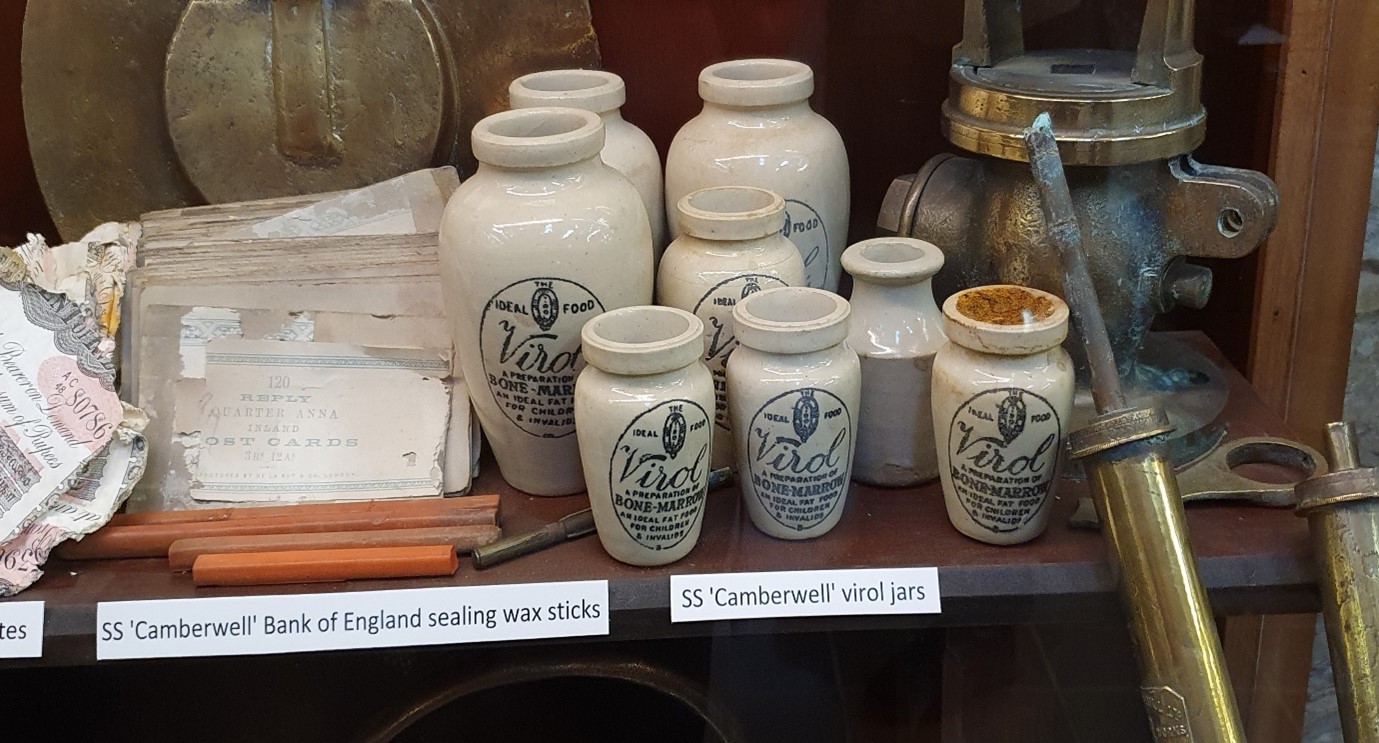Some cargo on shipwrecks can provide an abundance of information on the site and those who were once aboard. Currency is certainly no exception to this, and can be utilised as a valuable window into the past. In this resource, volunteer Shirley Wilson be examining three wrecks and the currency that has been found on three different sites which are on display at the Shipwreck Centre and Maritime Museum on the Isle of Wight.
El Campen
The El Campen (Kampen) was built in 1627 at Amsterdam, it was a wooden sailing vessel and was in service for the Kamer van Amsterdam. It had a registered 300 tons/305 tonnage, with 30 guns and a crew of 160 of soldiers, sailors and merchants. It set sail alongside another Dutch East Indiamen, the Vliegende Draak. Leaving on its maiden voyage from Amsterdam to Jakarta, India with unknown amounts of treasure, such as lead, silver, coin and passengers.
The Campen was under strict orders from the VOC directorate, (the Dutch Company who owned it) that they were under no circumstances to ‘anchor on English ground’, this was because in 1623 during the many disputes between rival English and Dutch companies over mercantile and political control in the East Indies, the Dutch had killed sailors and merchants of the English East India Company on the Island of Ambonia. In retaliation, James I had said that any Dutch ship touching English shores would be detained.
Relying on advice from their own ships, they ran towards the Isle of Wight, and on 23rd October 1627 it was lost in a storm whilst attempting to ‘thread the Needles’ to reach the Solent for shelter, it struck a rock and immediately began to break up. All on board were saved, 160 crew and soldiers managed to reach the shore on the Isle of Wight.
Both ships the Campen and the Vliegende Draak bottomed. The Campen had its bottom torn out and was soon smashed to pieces on the rocks. Only two chests of its total lading could be saved. There was a wealth of other cargo on board, such as personal belongings, quantities of the ship’s stores and supplies, including the various ship’s fittings, guns, and anchors.
In 1979 several artefacts were discovered including lead ingots, pieces of eight and some Dutch coins. Pieces of eight, also known as the Spanish dollar, were a common currency, mostly because colonists were not allowed to mint their own money. The Spanish dollar was worth eight reales, and at one time had an eight stamped on it. To make change, the coin was quite literally broken up, often to resemble pieces of a pie. Two pieces or ‘two bits’ of the silver coin made up a quarter, which is why Americans may still refer to a quarter (of a dollar) as two bits. Also discovered amongst the wreck were many leeuwendaalders. A leeuwendaalder is a coin with the word Leeuw, meaning Lion.
In the Shipwreck Museum you can see the Dutch Lion Dahhlders, (or dollars) pieces of eight, Dutch coins and pocket watches (figure 1). The Maritime Archaeology Trust have created 3D models of these coins from the Campen which are available on Sketchfab, and you can also find the El Campen on The Maritime Archaeology Trust’s new Needles Voyager, created for the UNPATH’D Waters Project.
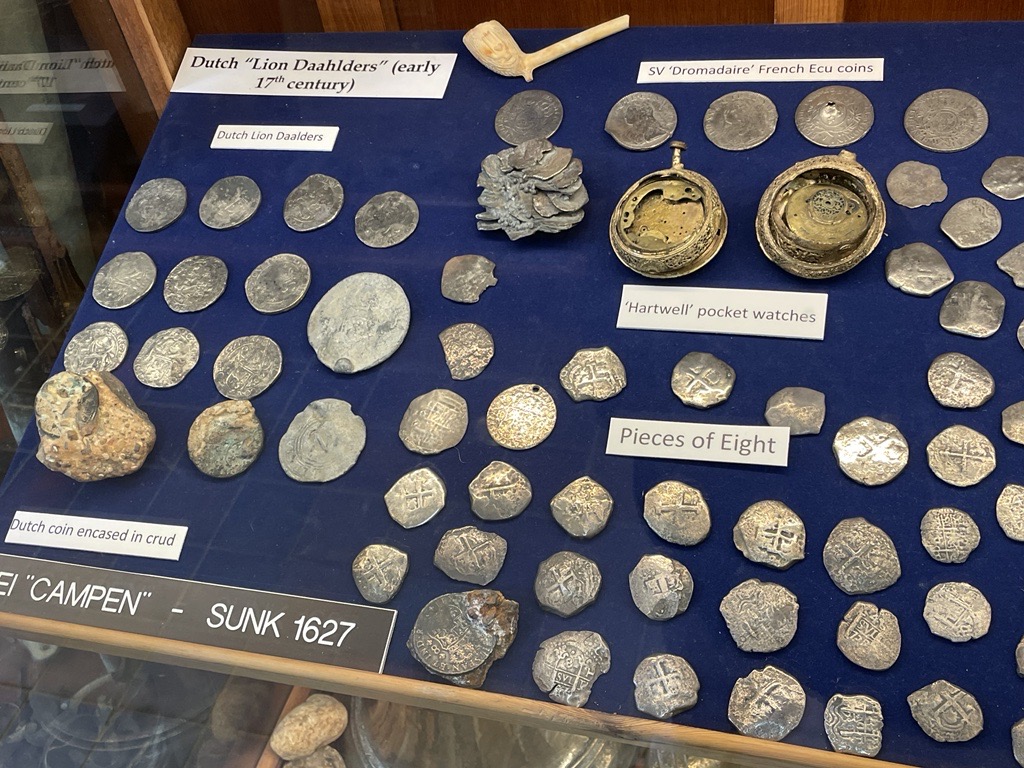
Figure 1: Dutch Lion Daalders and Pieces of Eight from the El Campen which can be viewed at the Shipwreck Centre, Maritime Archaeology Trust
Henry Addington
The Henry Addington (1796 EIC ship) was an East Indiaman in the service of the British East India Company (EIC). With a registered tonnage of 1200, a full rigged ship with 36 x 12 & 9 pounder guns and three decks. There were four ships with the name Henry Addington named for Henry Addington, Speaker of the House of Commons and Prime Minister of Britain (1801-1804), which sailed in the Indian Ocean during the late 18th and early 19th centuries. Two served with the British East India Company (EIC) as East Indiamen between 1796 and 1815 and two were country ships.
East Indiaman was a general name for any sailing ship operating under charter or licence to any of the East India trading companies of the major European trading powers of the 17th through the 19th centuries. The term is used to refer to vessels belonging to the Austrian, Danish, Dutch, English, French, Portuguese or Swedish companies.
The Henry Addington (1796 EIC ship) was launched in 1796 and made one voyage to China for the EIC and was only five days into its second when it was wrecked on 9th December 1798 on Bembridge Ledge, Isle of Wight during high tide and a heavy fog. When the tide went out the next day it bilged. Five crew members drowned while trying to reach shore on a raft and a block falling from the mizzen mast hit a boy on the head killing him.
By 16thDecember all that was left standing was the forepart of the vessel’s upper work, some casks were saved, but the EIC put the value of the cargo it lost at £29,222.
You can also see some of the Henry Addington Pillar dollars at the Shipwreck Centre (Figure 2). A 3D model of a button from the Henry Addington was created by volunteer Peter as part of the Fathoming The Future project.
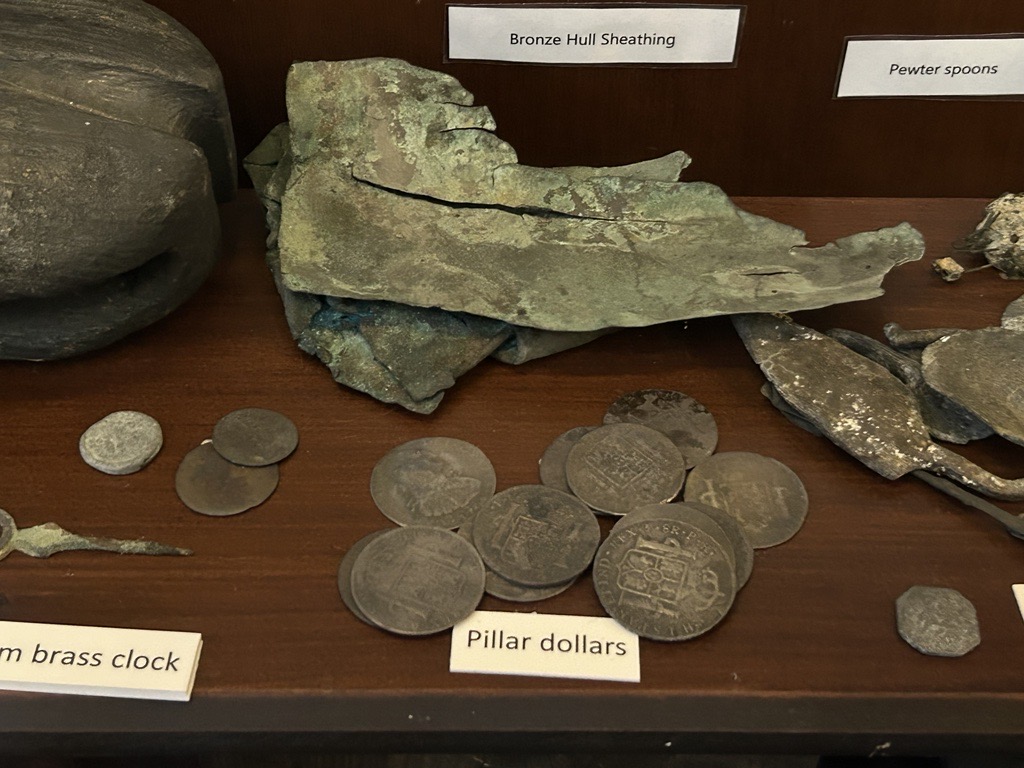
Figure 2: Pillar dollars from the Henry Addington which can be found at the Shipwreck Centre, Maritime Archaeology Trust
SS Camberwell
The SS Camberwell was a steam screw, cargo vessel of 4078 gross registered tonnage (2589 registered net tonnage). It was built in 1903 by L.J. Thompson & Sons Limited, Sunderland. The vessel measured 368 ft. long with a beam of 49 ft. and a depth of 19ft. It had two decks and two masts and was registered as schooner rigged, having an elliptical stern, six bulk heads and fitted with eight water ballast tanks with a capacity of 1,828 tons.
The SS Camberwell was on route from Middlesbrough via London to Calcutta with a full crew of sixty-five and two deck apprentices on 18th May 1917. The majority of the crew were of Indian heritage and you can read more about the crew in the Trust’s booklet on Black and Asian Seamen of the First World War.
It was attacked by two German mines which had been laid by the UC-36, just after it had left England and was only a few miles from the Isle of Wight. The explosion of the mine blew off the hatch covers and pierced the side of the ship. Broken in two it began to take on water, tilted to starboard before sinking in a few minutes. The crew managed to get into lifeboats, but unfortunately one capsized and seven Indian sailors were washed away at sea. The captain, Frederick Adamson, along with other survivors were picked up by patrol boats and taken to Portsmouth.
The entire cargo disappeared at the bottom of the Channel when it was sunk, and this is considered an informative wreck because the wide variety of the cargo demonstrated the number of different companies that were exporting goods and materials from the UK to India. These goods included, wine, olive oil, cement, fertilizer, chemicals, cotton, sheets, medicine, and postcards to English expatriates. The Board of Trade War Risk Insurance Records list the wide range of goods, which are too numerous to mention here, but can be found by reading the Camberwell site report.
The UC-36 which had laid the mines was rammed by the French steamer, Moliere on 21st May 1917 and all lives were lost.
After the tragedy, there was no rescue because of the war situation in Europe in 1917 and for many years the exact location of SS Camberwell remained unknown, until it was discovered by Martin Woodward a local diver from the Isle of Wight in the 1970’s who is also the owner of the wreck. SS Camberwell lies in a depth of 31 metres on the coast of the Isle of Wight, east of Ventnor.
Several excavation campaigns have been organised on the wreck, during the 20th and 21st centuries and fifty-eight objects have been recorded as part of the Forgotten Wrecks Project, these include lamps, deck candlesticks, telegraph parts, steering gear, bell, crockery, sextant and a quantity of ten Rupee bills (Figure 3). Many of the ship’s artefacts are on display at the Shipwreck Centre and Maritime Museum on the Isle of Wight (Figure 4 & 5). For more information on the Camberwell you can listen to the Trust’s podcast Uncharted Maritime Tales – Episode 1.
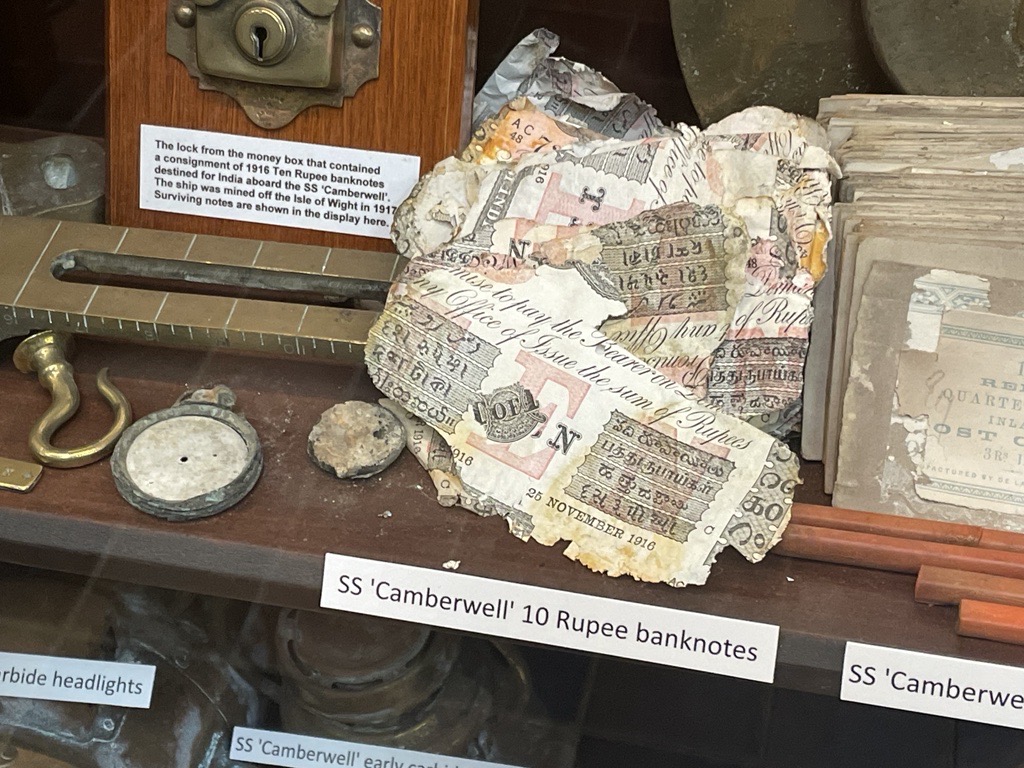
Figure 3: The Rupee bank notes from the SS Camberwell on display at the Shipwreck Centre, Maritime Archaeology Trust
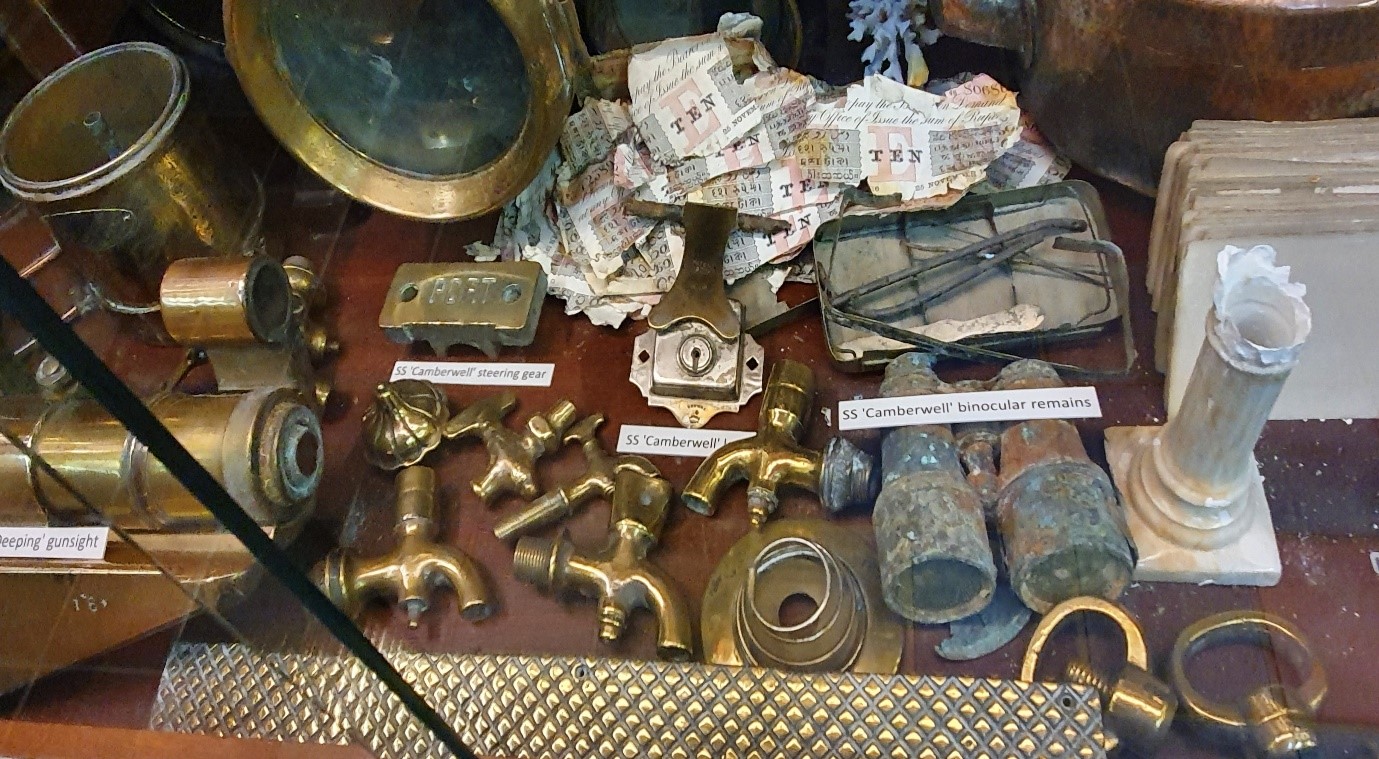
Figure 4: Parts of the SS Camberwell steering gear with the Rupee notes on display at the Shipwreck Centre, Shirley Wilson
